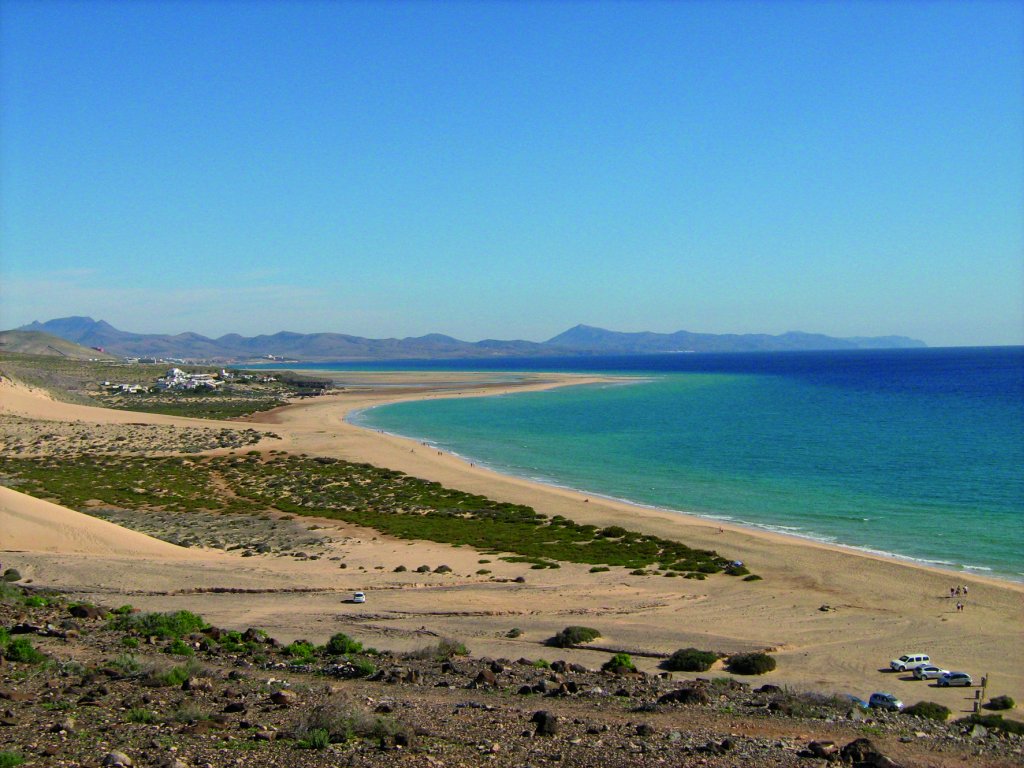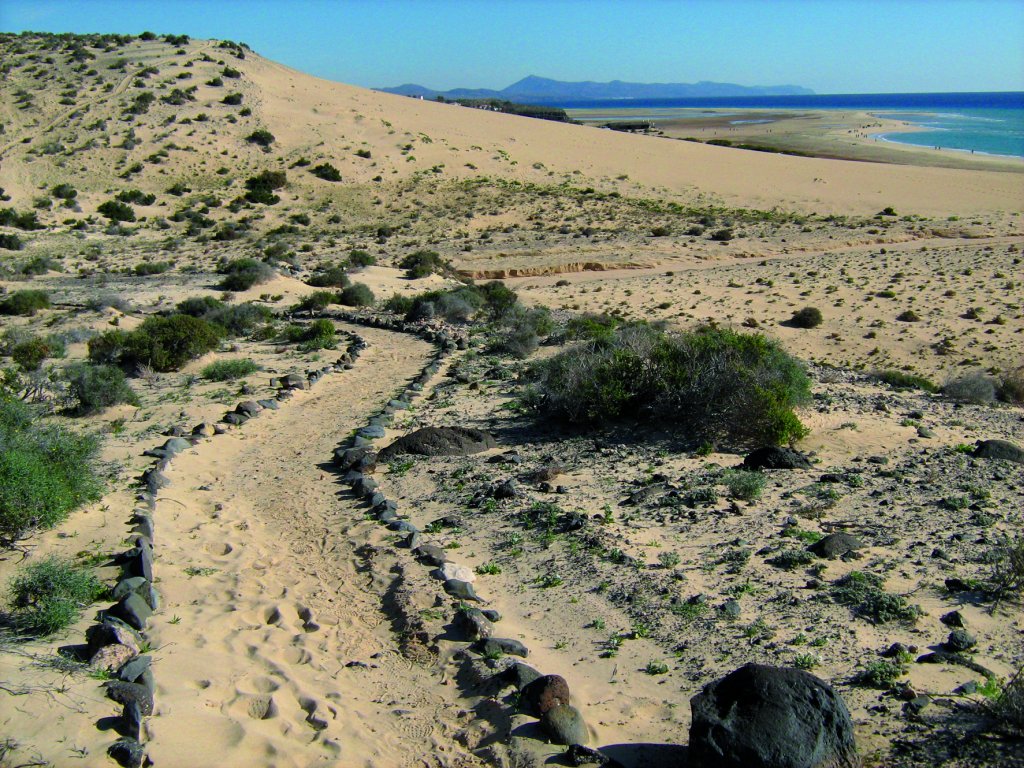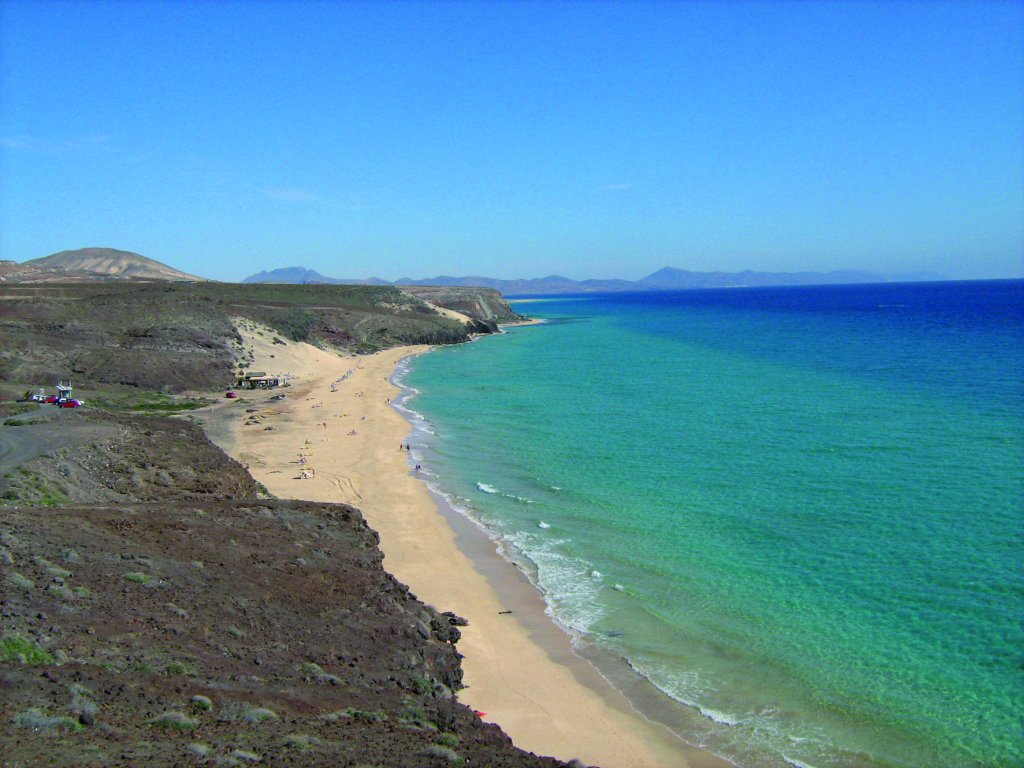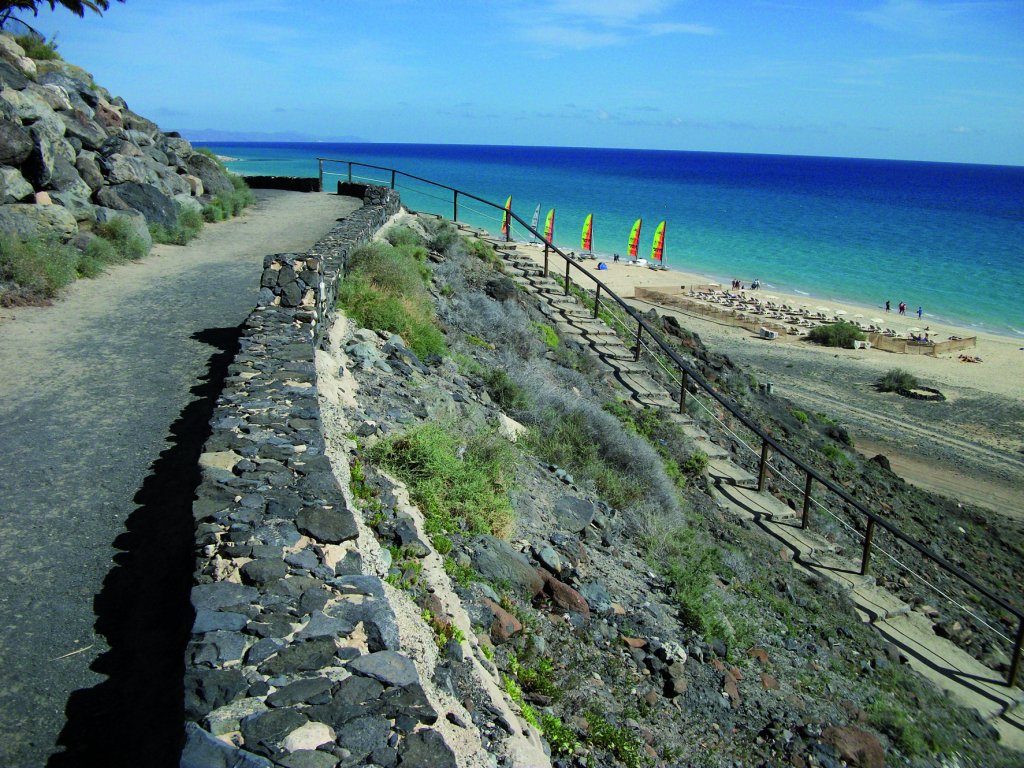- Home
- Rural Development
- Nature Trails
- Nature Trails
- Canary Islands Sector
- Fuerteventura
Stage 8: Casas del Risco del Paso - Morro Jable
Description

Towards Matorral Beach
The trail begins in the beautiful beach of Risco del Paso, one of the Sotavento or leeward beaches, and it goes on through undulating terrain very close to the beaches on the southeast coast of the island. After crossing one of the beaches, the beach of Mal Nombre (Bad Name), we reach Matorral beach, where we can see the Saladar de Jandía, a protected area of great natural and scientific value.
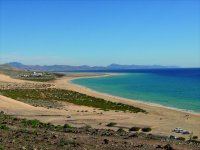
We begin the first leg of the trail on the beach of Risco del Paso, in the Sotavento beach area, which is part of the Jandía Natural Park, and we go along a stretch of sand that constitutes one of the most remarkable examples of beach and dune habitat on the entire island, if we take into account its extent and its flora diversity. However, even though this is a protected natural area, it is also an area of heavy off-road vehicle traffic, as is the entire natural park.
The route heads in a southwesterly direction - from a point where there are some information panels – and it ascends a small hill from which we begin to have a glimpse of the beauty of this coastal area. Not surprisingly, the Sotavento or leeward beaches are regarded among the best in the whole of Fuerteventura and, by extension, of the Canary Islands, because of their pristine white sand and crystal clear blue waters.
This nature trail runs through undulating terrain, parallel to the majestic beach. Sometimes, because of the heavy traffic of motor vehicles going to the very edge of the beach, we will find numerous tracks crossing the path; but this should not confuse us, since the first leg of the trail is clearly marked with stones.
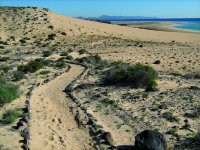
Following this path, we reach Mal Nombre beach, and continue our way along the sands, around a beach hut, until we come to a dirt track that leads directly to the path.
At the end of this path, the Natural Way follows dirt tracks that run along some beach sections, alternating with tourist resorts, in order to reach the eastern tip of Matorral beach, where there is an important wetland: Saladar de Jandía. From here we can take another path up to the peak of La Zarza (PR FV 54).
Walking along the seafront promenade along the entire Matorral beach, with the landmark of the lighthouse at Morro Jable, we reach the other end of the beach, which is also the end of this section of the trail.
The trail ends at one of the most important tourist resorts on the Island, Morro Jable, an old fishing village whose occupation is still largely fishing (which will allow us to enjoy some exquisite fresh fish dishes) even though most of the villagers currently work in the tourist industry. Morro Jable offers services and facilities that will make it possible for us to enjoy all kind of leisure activities.
Profile
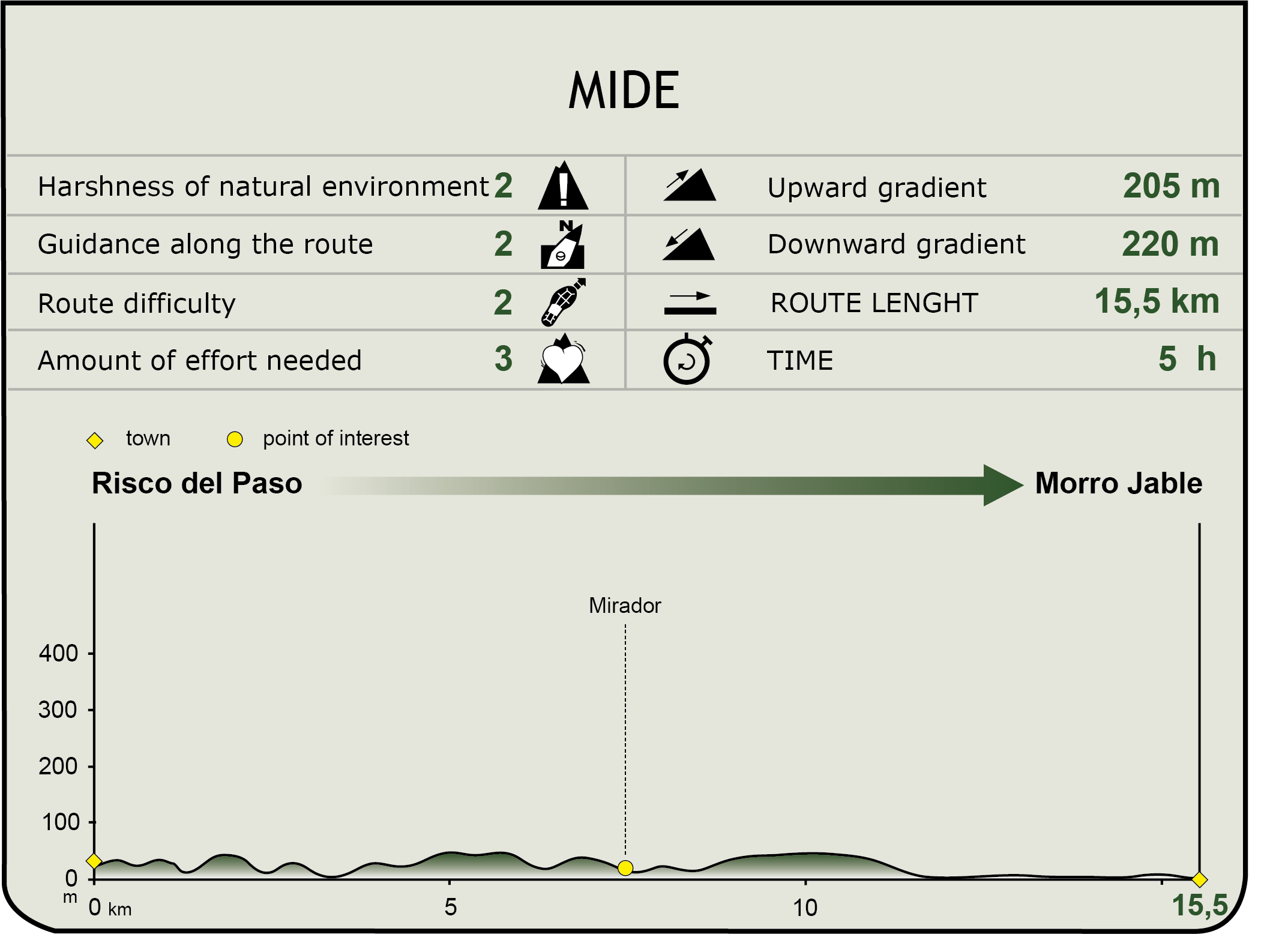
MIDE (Method for the Information of Excursions)
Featured
Further information
Saladar de Jandía (Jandía Salt Marshes)
Saladar de Jandía, officially known as Playa del Matorral, is a protected natural area because of its significant scientific interest and natural value. It is a quite singular coastal ecosystem, in which the vegetation areas suffer periodic sea water floods which create brine ponds once the water has evaporated.
By tidal action, plant communities are totally or partially flooded for several hours a day, so that the plants have to counteract the enormous concentration of salt they absorb either by storing water in their leaves or by secreting water through minute glands. Therefore, this is a special Thermo-Atlantic halophytic scrub habitat which is quite stable in spite of its fragility, since rocks and sands act as a natural barrier against the action of the waves, making it possible for sea birds to nest in the shrubs. In addition to several native plants, the salt marshes of Jandia are also home to a high number of endemic invertebrate species.
This type of ecosystem is very rare, which means that this is a wetland area of remarkable significance not only for the Canary Islands but also for the Macaronesia region in general. Saladar de Jandía is a protected area since 1987, and it is also a Site of Scientific Interest since 1994. In 2000 it was declared a Site of Community Importance (SCI) and, since 2002, this is the only wetland in the Canary Islands that has been included in the list of the Ramsar Convention of Wetlands of International Importance.
